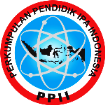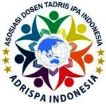The Development of an Integrated Interactive Digital Physics Module for the Larung Sesaji Culture of the Coastal Community of Jember Regency
Abstract
The development of a digital physics module integrated with the offering culture of the coastal community of Jember Regency is based on the need for learning media that is able to link physics material with the phenomena that exist around students. The purposes of this media development are: (1) to describe the procedure for developing a digital physics module that is integrated with the local wisdom of the coastal community of Jember Regency, (2) to describe the validity of the module developed, (3) to describe the effectiveness of the module developed by the researcher. This research is a type of research and development (R&D) adapting Nieeven's development model. The digital module was developed with the help of Articulate Storyline 3 software. The respondents of this study were students of class X MIPA SMA Plus Al-Azhar Jember. The selection of islamic boarding school was aimed at preserving regional culture in the islamic boarding school environment and to ward off the views of modernists who think that islamic boarding school tend to be closed to use technology in the education. The Procedure for developing physics module consists of 3 stages, there are preliminary research, prototyping stage, and assessment stage until can produce learning media that integrate the culture of Larung Sesaji Coastal Community of Jember with class X physics lesson Newton’s Law of Gravity. The researchers module get an average validation score of 3.69. The digital physics module on a small-scale trial got an effectiveness score of 0.53 and on a large-scale trial it got a score of 0.71. Based on the research that has been done, the module developed by the researchers produces a product in the form of Newton Law’s of Gravity lesson integrated with the Culture of Larung Sesaji was classified as valid and effective to use to support the physics learning process in schools. The product of this research is a digital module which is a digital physics module that can be used via a laptop or computer that has chrome software
Keywords: larung sesaji, local wisdom, Newton law’s, physics module.
Full Text:
PDFReferences
Anantyarta, P., & Sholihah, F. N. (2020). Pengembangan Multimedia Pembelajaran Pada Materi Bioteknologi menggunakan Program Autoplay. Journal of Natural Science and Integration, 3(1), 45–57.
Astutik, S., Susantini, E., Madladzim, & Nur, M. (2017). Effectiveness of Collaborative Students Worksheet To Improve Student ’ S Affective Scientific Collaborative and. International Journal of Education and Research, 5(1), 151–164.
Baharuddin, & Daulay, I. (2017). The Development of Computer-based Learning Media at a Vocational High School. International Journal of GEOMATE, 12(30), 96–101.
Fadly, W. (2018). Validitas Model “Produksi” Sebagai Alternatif Model Pembelajaran Untuk Mendukung Kurikulum 2013. Journal of Natural Science and Integration, 1(2), 145–158.
Hake, R. R. (1998). Interactive-engagement Versus Traditional Methods: A Six-thousand-student Survey of Mechanics Test Data for Introductory Physics Courses. American Journal of Physics, 66(1), 64–74.
Irawan, D., Prihandono, T., & Nuraini, L. (2020). Validity of a Coastal Environments-Based Physics Learning Module on the Theme of Temperature and Heat. Jurnal Ilmiah Pendidikan Fisika, 4(1), 7.
Irwandani, I., Latifah, S., Asyhari, A., Muzannur, M., & Widayanti, W. (2017). Modul Digital Interaktif Berbasis Articulate Studio’13: Pengembangan pada Materi Gerak Melingkar Kelas X. Jurnal Ilmiah Pendidikan Fisika Al-Biruni, 6(2), 221.
Kamila, N., Prastowo, S. H. B., & Nuraini, L. (2020). Penerapan Model Application of Step Instruction and Elaboration (APPOSITE) untuk Meningkatkan Hasil Belajar Kognitif Siswa SMA pada Materi Suhu dan Kalor. Journal of Natural Science and Integration, 3(2), 163–171.
Kartono, Hairida, & Bujang, G. (2016). Penelusuran Budaya dan Teknologi Lokal dalam Rangka Rekonstruksi dan Pengembangan Sains di Sekolah Dasar. Cakrawala Pendidikan, 343–368.
Lestari, P. B., & Hartati, T. W. (2017). Analisis Pengembangan Bahan Ajar Mikrobiologi Berbasis Inkuiry di IKIP Budi Utomo Malang Analisys on Developing Inquiry-Based Teaching Material for Microbioogy in IKIP Budi Utomo Malang. Bioedukasi, 10(2), 1–6.
Misbah, Wati, M., & Lestari, P. A. (2016). Effectiveness Physics Module Class X Using Cooperative Learning Model With a Peer Assessment. International Conference on Educational Research and Innovation, 199–202.
Muhroji, M., & Yusrina, H. (2018). Penggunaan Modul pada Pembelajaran Tematik di SDN 1 Jimbung Klaten. Jurnal Profesi Pendidikan Dasar, 5(1), 1–9.
Nasyiriyah, F. 2016. Pengembangan Modul Interaktif Adobe Flash CS 6 Mata Pelajaran Sejarah Kelas X SMA dengan Menggunakan Model 4D pada Sub Pokok Bahasan‖ Perbedaan Candi di Jawa Tengah dan Jawa Timur. Skripsi. Jember: UNEJ
Nieveen, N., Mc. Kenney, & Akker, J.V., 2006. Educational Design Research. London: Routledge.
Nuraini, L., & Supriadi, B. (2018). Analisis Pemanfataan Multimedia terhadap Penguasaan Konsep Reaksi Nuklir Mahasiswa pada Mata Kuliah Fisika Inti. Saintifika, 20(2), 22–31.
Pornamasari, E. I. (2017). Pengembangan Modul Pembelajaran Berbantu Flipbook Maker dengan Model Pembelajaran Numbered Heads Together (NHT) Berbasis Teori Vygotsky Materi Pokok Relasi dan Fungsi. Aksioma, 7(1), 74.
Pratama, R. A. (2019). Media Pembelajaran Berbasis Articulate Storyline 2 pada Materi Menggambar Grafik Fungsi di SMP Patra Dharma 2 Balikpapan. Jurnal Dimensi, 7(1), 19–35.
Rahayu, W. E., & Sudarmin. (2015). Pengembangan Modul IPA Terpadu Berbasis Etnosains Tema Energi dalam Kehidupan untuk Menanamkan Jiwa Konservasi Siswa. Unnes Science Education Journal, 4(2).
Rahmawati, R. D., & Bakhtiar, N. (2018). Pembelajaran IPA Berbasis Integrasi Islam-Sains pada Pokok Bahasan Penciptaan Alam Semesta dan Tata Surya. Journal of Natural Science and Integration, 1(2), 195–212.
Rahmayanti, P. R., Wati, M., & Mastuang, M. (2016). Pengembangan Modul Suhu dan Kalor Menggunakan Model Pembelajaran Kooperatif Tipe Somatic, Auditory, Visual, and Intellegent untuk Siswa Kelas X SMA Negeri 7 Banjarmasin. Berkala Ilmiah Pendidikan Fisika, 4(3), 192.
Ratumanan, G. T., & Laurens. 2011. Evaluasi Hasil Belajar pada Tingkat Satuan Pendidikan. Surabaya: Unesa University Press.
Rosidah, T., Hidayah, F. F., & Astuti, A. P. (2018). Efektivitas Model Pembelajaran Problem Based Instruction Berpendekatan Etnosains untuk Meningkatkan Prestasi Belajar Siswa pada Materi Stoikiometri. Seminar Nasional Edusaintek, 419–427.
Rusman. 2012. Belajar dan Pembelajaran berbasis Komputer (Mengembangkan Profesionalisme Abad 21). Bandung: Alfabeta.
Saputera, A. R. A., & Tendean, M. (2020). Peranan Kyai dan Santri dalam Mengimplementasikan Nilai Pendidikan Agama di Tengah Lajunya Arus Globalisasi dan Fenomena Akulturasi Budaya Indonesia. Jurnal Pemikiran, Pendidikan, Dan Penelitian Ke-Islaman, 6(1).
DOI: http://dx.doi.org/10.24014/jnsi.v5i1.12640
Refbacks
- There are currently no refbacks.

Journal of Natural Science and Integration
E-ISSN: 2620-5092 P-ISSN: 2620-4967
Published By:
Department of Science Education, Faculty of Education and Teacher Training,
State Islamic University of Sultan Syarif Kasim Riau, Indonesia
Mailing Address:
Jl. H.R Soebrantas Km. 15 No. 155
Kelurahan Simpang Baru
Kecamatan Tuah Madani, Pekanbaru, Riau, Indonesia
Email: jnsi.tadrisipa@uin-suska.ac.id
Indexed By:
Journal of Natural Science and Integration is licensed under a Creative Commons Attribution 4.0 International License.


_-_Copyy2.png)






.jpg)
.png)
.jpg)
.jpg)




